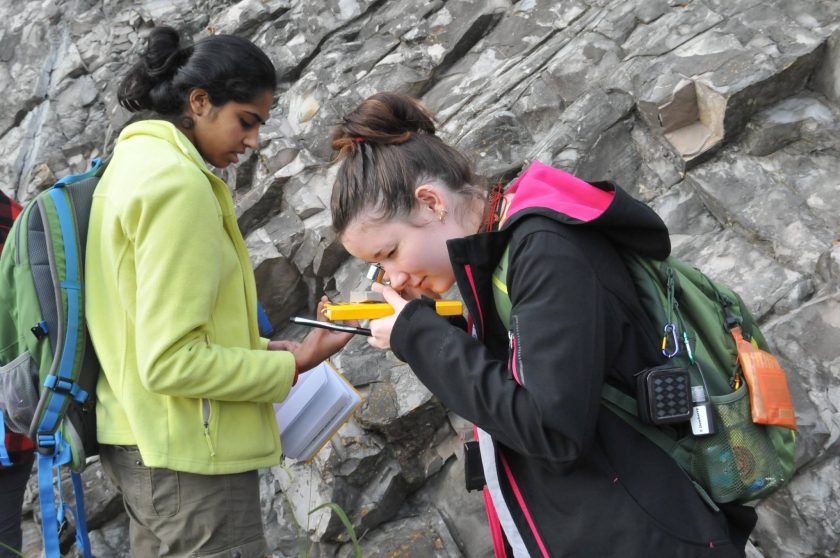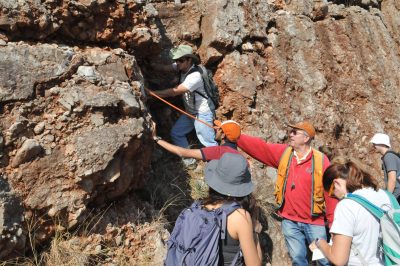Chevron Helps Next Generation of Geoscientists Learn in the Field
June 6, 2017

Crawling over outcrops in the hot sun or beating rain might not be for everyone, but for Jackson School students it’s a fundamental part of their education. From their first field method course to the intensive GEO 660 field camp – and a host of potential field experiences in between – these trips are where all the classwork comes together and geoscientists are made.
“It’s an essential part of the education,” said Department of Geological Sciences Chair Charles Kerans. “For me, it’s a critical role to take people out so they learn what the real world looks like as opposed to what the student finds in a text book.”
That’s why it’s so important that Chevron has donated $350,000 to the University of Texas at Austin Jackson School of Geosciences to sponsor the field trip portions of several geology courses offered to undergraduate and graduate students. The company’s donation will support domestic and international field trips from the 2016-17 academic year through the 2018-19 academic year. This year, these trips include an honors trip to Hawaii with professors Mark Cloos and Jamie Barnes, a graduate trip to the Guadalupe Mountains’ Delaware Basin with Kerans and Professor Bill Fisher, and a trip to the Andes with professors Brian Horton and Ron Steel.
The job of understanding what’s going on in the earth below your feet is not an easy one. It requires a knowledge of scale that can range from sand grains to mountain ranges and the ability to interpret how geologic processes have shaped the landscape over millions and even billions of years, said Kerans. Without such knowledge, accurately studying the subsurface though data from well logs or seismic information is impossible.

“Being out in the field you get an immediate visual image of the structure and shape of the feature you’re trying to predict,” Kerans said. “It’s really the only way to get an accurate result in terms of interpreting the subsurface environment.”
While other earth science programs have scaled back field offerings, the Jackson School has ramped up, expanding courses in hydrogeology and marine geosciences, thanks to the financial support of Jackson School alumni and friends, like Chevron.
Field experiences over the past year include a trip to Oklahoma in November where Professor Cloos led 40 students through the Arbuckle and Ouachita mountains. The three-day journey “through time” included dozens of stops at world-class outcrops where students could practice their skills under the tutelage of Cloos, who acted as guide, professor and coach.
“Get some experience noticing stuff – make a discovery,” was a refrain students often heard from Cloos during the trip. “Make the outcrop talk to you by making observations; collect another piece in the puzzle of what happened here.”
Emily Peacock was among the students who took the voluntary excursion. As a senior, she’s had multiple experiences in the field, but said she always jumps at the opportunity for more.
“This trip was totally optional, but I marked it on my calendar from day one,” she said. “You can sit at a computer all you want and look at pictures from this area, but until you can go out there and see it, and physically touch it, you don’t really have an understanding of what you’re doing.”
